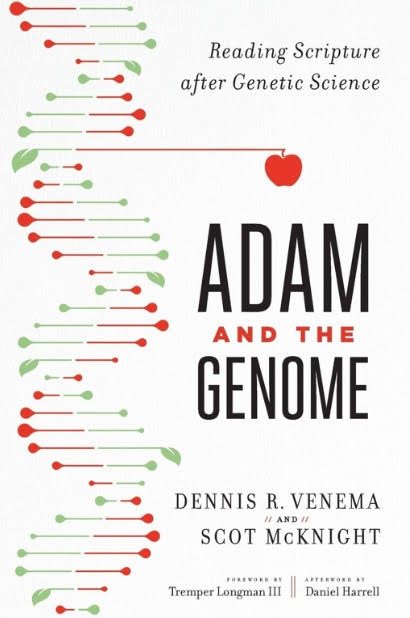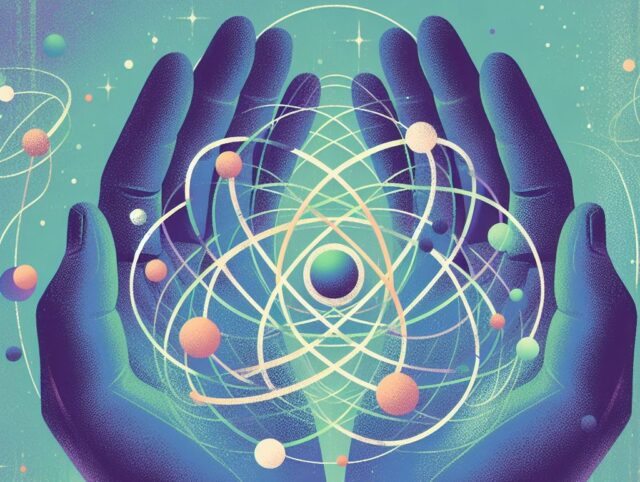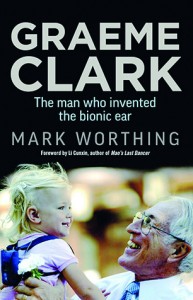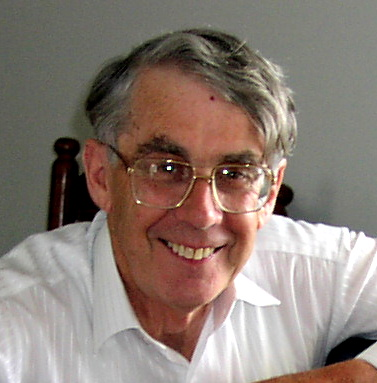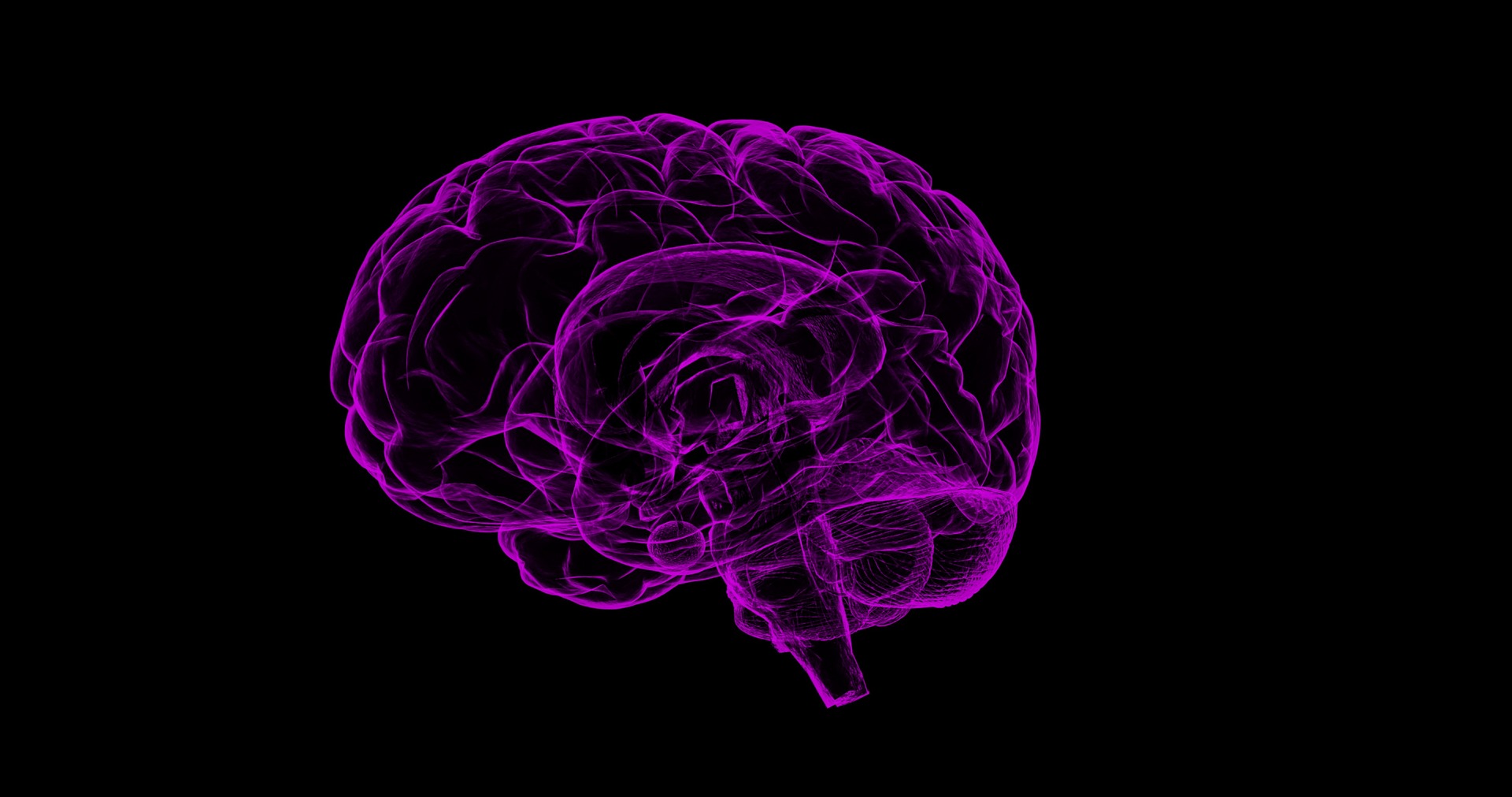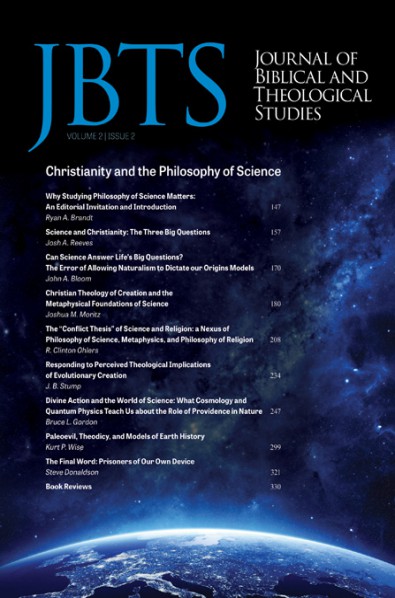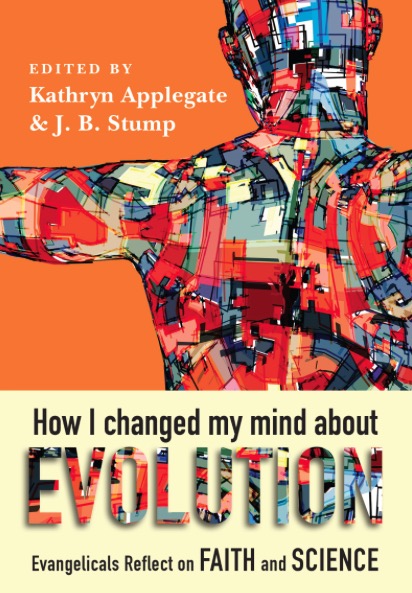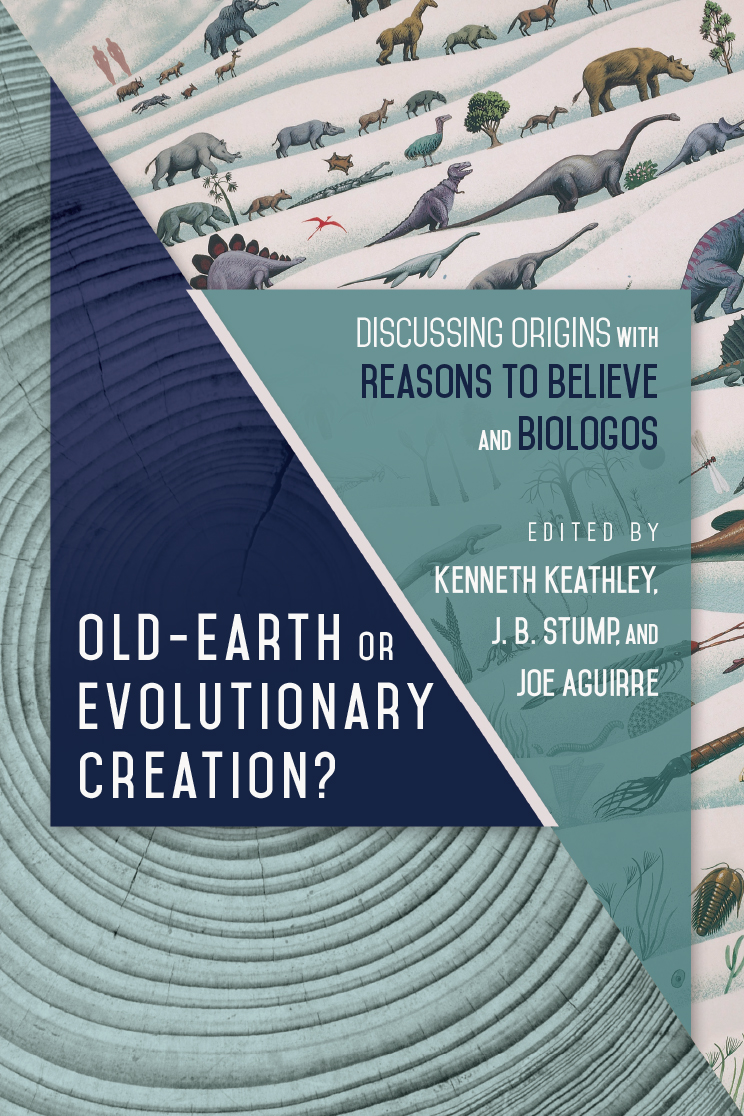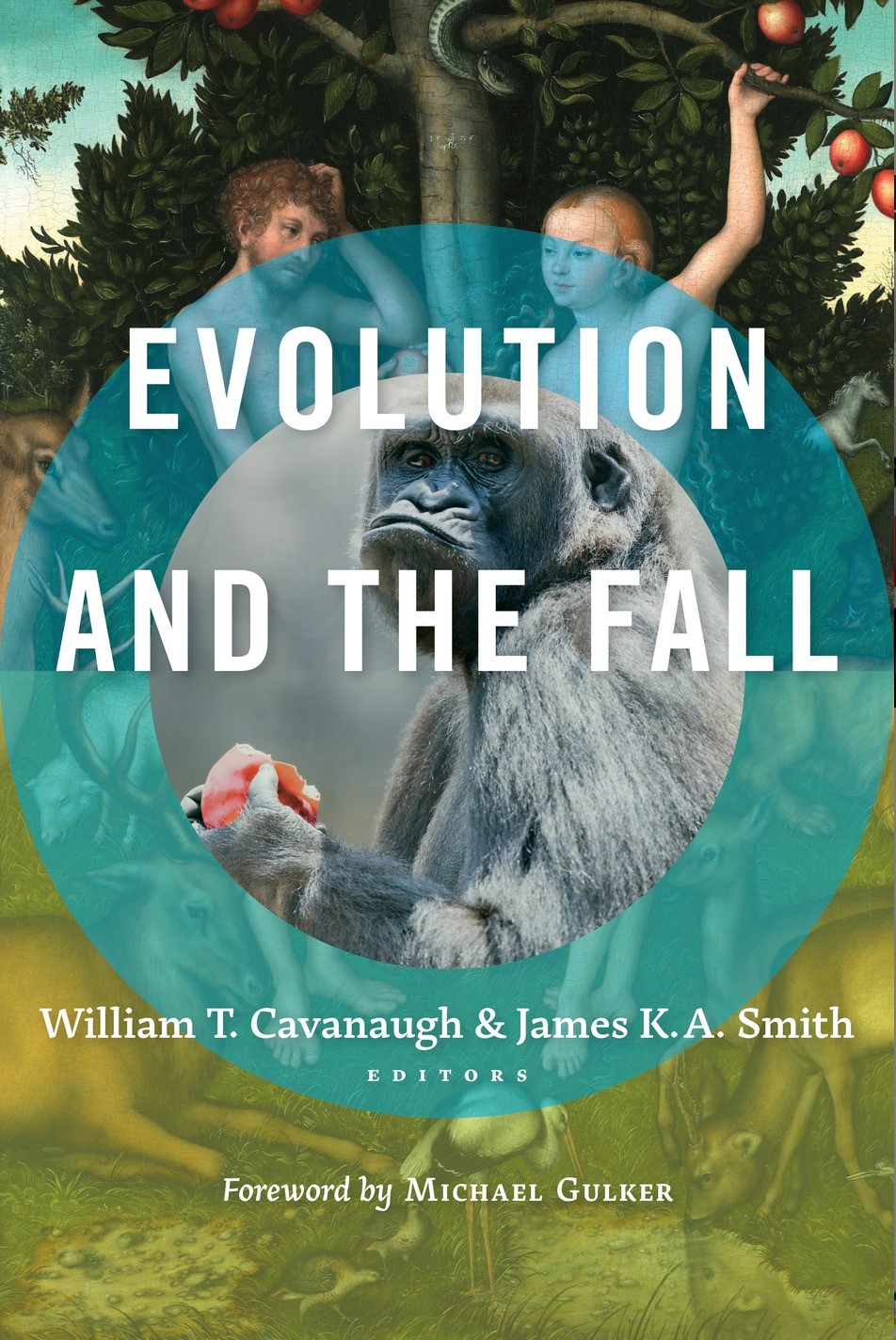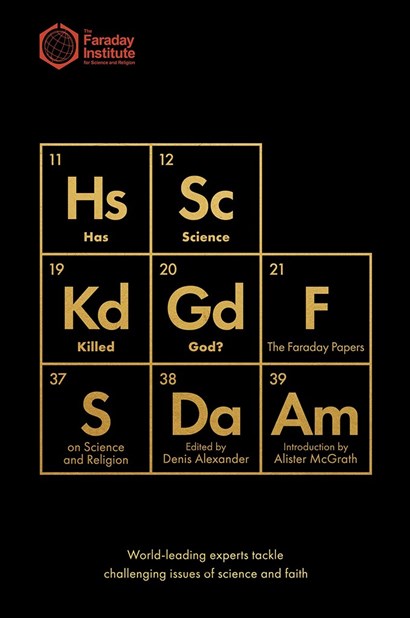


Alan Gijsbers, June 2008.
Reality and Addiction: Neuroscientific and psychological perspectives
Alan Gijsbers
Dr Alan Gijsbers MBBS FRACP FAChAM DTM&H PGDip Epi is Specialist Physician in Addiction Medicine; Head, Department of Addiction Medicine Royal Melbourne Hospital; Director, Substance Withdrawal Program The Melbourne Clinic; Chairman Victorian Addiction Inter-hospital Liaison Association; State Chairman ISCAST(Victoria); Immediate Past Chairman, Christian Medical Fellowship of Australia.
Abstract
Mind-altering drugs are purported to enhance reality. However, drug-affected patients describe addiction as unreality, and recovery as a return to reality. Neuroscience helps to clarify the difference between perception and reality. Our perceptions are selective and colour particularly the way we view, recall and rework our own narrative. This is partly due to the defence mechanisms we all employ. Their use need not be a sign of ill-health, but a sign of healthy coping. However some of our damaged patients have such a poor sense of themselves that they see their whole narrative very negatively. Insight relates to understanding our perceptive filters and making them truer to reality. It is now recognised that the emotions shape our reasoning and our perceptions. These defensive processes are well-narrated in John’s Gospel, which deals with human responses to the Light of the World.
Part of addiction recovery is for patients to develop a truer understanding of the reality of their own history. This involves overcoming their own fear and denial and coming to terms with the painful emotions invariably attached to these memories. More deeply they need to reframe their distorted view of themselves and see themselves in a truer light.
Recovery involves knowing the truth about themselves, for in the light of that truth there is freedom.
Key words
Reality, addiction, neuroscience, perception, narrative, defence mechanisms, entheogens, pleasure, biopsychosocial model, complexity.
Outline
Huxley’s claim that addictive agents enhance the perception of reality.
The reality of drug taking
Reality of drug taking in James Morrison’s life
Classification of addictive agents and a clinical description of their effects
The pursuit of pleasure
The neuroscience of addiction and broader biopsychosocial models
Neurodevelopment
The psychology of consciousness, perception, attention, concentration and recall.
Understanding the self, especially as narrative.
Adaptive styles of self-perception
Recovery and reality
The doors of perception
The Age of Aquarius opened up a new psychedelic perspective. This contrasted markedly with the drab regimentation of post World War II with all the old traditions of structure and rationality. Drugs (and whenever I use the term I include alcohol) altered perception. Reality was more than what we saw with our sober eyes. William Blake’s essay was resurrected by those convinced that psychedelic drugs would open the doors to a better and deeper perception of reality.
If the doors of perception were cleansed everything would appear to man as it is, infinite. For man has closed himself up, till he sees all things through narrow chinks of his cavern.
Blake c.1790 p.101
Aldous Huxley in 1954 argued that the taking of psychedelic drugs (in his case, the hallucinogen mescaline) opens the doors of perception, and humans would see things as they really are, rather than the usual highly filtered way. Some quotes from his book The Doors of Perception give a flavour of his views:
To be shaken out of the ruts of ordinary perception, to be shown for a few timeless hours the outer and inner world, not as they appear to an animal obsessed with survival or to a human being obsessed with words and notions, but as they are apprehended, directly and unconditionally, by Mind at Large— this is an experience of inestimable value to everyone and especially to the intellectual.
The man who comes back through the Door in the Wall will never be quite the same as the man who went out. He will be wiser but less sure, happier but less self-satisfied, humbler in acknowledging his ignorance yet better equipped to understand the relationship of words
to things, of systematic reasoning to the unfathomable mystery which it tries, forever vainly, to comprehend.
Huxley 1954
These quotes express quite a perverse view of reality and its perception. Rather than perception helping us to see reality as it really is, perception has to be removed in order to see reality without our filters. Our mental constructs need to be abandoned or radically altered to see truly. Huxley’s view means we only see reality through the psychedelic haze of hallucination. Indeed there is a whole species of drugs called entheogens1 (like the peyote cactus used in the Native American Church) which are specifically designed to allow us to enter the divine presence by means of religious ritual enhanced by these drugs.
John Greenleaf Whittier wrote a poem, The Brewing of Soma2, about such religious practices (Whittier 1872). Concerned by the religious excesses of the Holy Rollers who promoted ecstatic behaviour, he penned a lengthy poem describing all sorts of ways that people have tried to enter the presence of God. Soma was an entheogen, but Whittier recognised there were all sorts of other religious ways for humans to transport themselves into the presence of God – a pursuit of Joy if you like!
As in the child-world’s early year Each after age has striven
By music, incense, vigils drear
And trance, to bring the skies more near, Or lift men up to heaven!
Whittier 1872
All these strategies, music, incense, vigils and trances by which humans have tried to enter the Holy presence of Ultimate Reality are regarded by Whittier as foolish ways:
And yet the past comes round again And new doth old fulfill;
In sensual transports wild as vain We brew in many a Christian fane3 The heathen Soma still!
Whittier 1872
His poem goes straight on to stanzas which are often used without the context but are the well-known hymn:
http://en.wikipedia.org/wiki/Entheogen, viewed May 2008.
There are a number of versions on the Internet; I accessed the one from the Quaker press. The hymn Dear Lord and Father of Mankind comprises the last 6 stanzas from this longer poem.
Ancient word for place of worship.
Dear Lord and Father of mankind Forgive our foolish ways!
Reclothe us in our rightful mind In purer lives Thy service find, In deeper reverence, praise.
Whittier 1872
To Whittier, reverence, rightmindedness, pure service, quietness (he was, after all a Quaker), ordered lives, peace and the still small voice were truer ways to perceive reality. It’s not unusual to find hymns are actually a theological polemic. Charles Wesley was a master at that art. In Whittier’s case he argues for a certain form of Christian epistemology!
The pursuit of reality through drugs is not just confined to entheogens. The phrase In vino veritas suggests that alcohol intoxication is a truer state than defended sobriety. This notion expresses the romantic idea4 that sobriety with its civilised inhibitions prevents the real me from manifesting myself; I live in hypocrisy. Only when my social inhibitions are anaesthetised by alcohol will the real me be expressed. But is the me unmasked by intoxication the real me, or simply another mask? Or is the real me a combination of my native state overlaid by social inhibitions?
The issue is acute in my clinic where patients dislike the shy inhibited, sober me, would prefer the socially gregarious me after a few drinks, but hates the person who cannot remember what happened the next day, particularly when they are reminded of how embarrassingly inebriated they were. Who is the real me? We will return to an understanding of the self later in this paper.
The reality of drug taking
Do drugs give us a better perspective on reality or just a different perception of reality? Which is real, the hallucinogenic perspective or the mundane one? Which gives the truer insight? Whittier had no doubt. As a Quaker he disdained narrow creeds and rigid doctrines. For him quiet intuition informed by Scripture, untrammelled by any of a number of artificial ecstasies, was the preferred way. He reacted against the Holy Rollers who toured his town of Amesbury with their forms of spiritual excitement and he had had his fill of Puritanism, with its vigorous and cruel persecution of pacifist Quakers in New England in the 17th Century. Simplicity, humility, a humble walking with the Lord, a grateful life enjoying nature in the face of trial and bereavement, were his preferred way.
James Morrison was the band leader of a 70’s rock group The Doors. The name of his band was a direct allusion to Huxley and Blake and indeed he based his life around pursuing altered perception. His experience with the doors of perception indicates the danger of playing around with mind-
For a rich exploration of the dimensions of romanticism in understanding the nature of the self see Sources of the self: the making of the modern identity (Taylor 1989 pp. 355-390), ch 20 ‘Nature as source’ and ch 21 ‘The expressivist turn’.
altering drugs. His death was ambiguous, as is the phrase on his headstone:
ΚΑΤΑ ΤΟΝ ∆ΑΙΜΟΝΑ ΕΑΥΤΟΥ
(according to his own daemon: drive, spirit, demon)
This poignant phrase indicates the way in which a life of drugs can drive people out of control. It is also an interesting play on the ambiguity of the word spirit, which can refer to alcohol, to liveliness, to breath, to life or to inner drive. This is a fascinating observation as we are starting to recognise the way alcoholic spirits and other drugs affect the motivational circuitry of the brain.
Classification of addictive drugs and the clinical description of their effects
Why do people take drugs? Apart from altered perception which we outlined above, drugs (including alcohol) profoundly stimulate the pleasure centres of the brain. The pursuit of pleasure thus seems to be a main driver. Some of these drugs (like alcohol, opioids, benzodiazepines, marijuana and the like) also cause sedation. Therefore they are useful during the day to relieve anxiety or at the end of the day to calm down and sleep. Other drugs (like coffee, amphetamine and cocaine) stimulate, so they are useful when the person needs to meet deadlines. Many drugs are taken for social reasons. Indeed alcohol is sometimes described as a social lubricant oiling the wheels of conversation. Most of these drugs, whether stimulant or sedative, allow people to enter an alternative space; they allow people to take time out from where they are at. Thus Huxley in his Doors of Perception describes using drugs as ‘chemical vacations from intolerable selfhood’. (Huxley 1954) This is a profound comment often remarked upon by my patients. Patients who suffer from emotional dysregulation, find that the use of drugs anaesthetises their emotions.
Abstaining forces them to face up to their emotions, and they are not sure they are capable of facing these. Thus recovery is not just stopping drugs. People need to come to terms with themselves and their emotions in order to sustain a complete recovery.
Not all drug use is addictive drug use. People can take drugs casually and intermittently. Sometimes alcohol is taken purely for the pleasure of taste. However even casual use can be damaging if it causes intoxication.
Indeed most alcohol-related deaths occur in intoxicated people who are not addicted. Likewise heroin overdoses may be fatal, especially in those who are intermittent users, who have not developed an intrinsic resistance (called tolerance) to the drug.
Addiction however is a debilitating condition. Different expert bodies describe addiction somewhat differently but most agree on the following features.
First tolerance. This means that the user needs to take more and more of the drug to feel the same effect.
People who develop tolerance usually find that when they try to stop, they suffer from withdrawal symptoms specific to the particular drug they are dependent on. Withdrawal symptoms are the second feature of addiction.
As drug use escalates users usually find that their drug use becomes so important in their lives that nothing else matters. Such salience (the third feature) skews their whole lifestyle. It can lead to such desperate acts as stealing, dealing and prostitution, the triad of illicit activities usually necessary to maintain the high level of expenditure needed to sustain especially an illicit drug habit.
People with addiction may suffer from cravings (the fourth feature) for the drug especially shortly after they have withdrawn from the drug.
Thus they are very likely to relapse into drug use shortly after cessation (the fifth feature).
Further they are likely to persist in their drug use in spite of suffering from the adverse consequences of their drug use (the sixth feature). This may include adverse effect on their relationships, their productivity or their health.
This is the reality of a full-blown addiction.
The Pursuit of Pleasure
I have heard that Peter Cooke and Dudley Moore in a skit describe a church which has received a new epistle from the Apostle Paul. It is a very short epistle, addressed to the church of the Ephiscians. It simply says,
Dear Ephiscians,
I hear you are enjoying yourselves. Stop.
Signed Paul.
We who know Paul better know that this is a gross distortion of the great apostle. For he took great delight in his churches, he knew the Spirit’s fruit of joy in his life and he knew godliness with contentment. What’s more he was even able to sing hymns while in prison. Nevertheless this is a common image of Christians, particularly of Puritan Christians. Once again this is a caricature of Puritanism for there is a great depth in the religious affections of the Puritans, but this is how joyless Christianity is commonly described. We Christians desperately need to articulate a rich theology of ‘solid joys and lasting pleasure’.5
5 From Newton’s hymn Glorious things of you are spoken, last 2 lines ‘Solid joys and lasting pleasures, none but Sion’s children know’. (Newton 1779)
Neuroscience of addiction
The neurobiology of addiction is quite complicated. Initially studies focussed on the dopamine reward pathways in the limbic system. These are:
Circuits that serve to colour an experience with emotion and direct the individual’s response to rewarding stimuli, including food, sex and social interaction.
Subsequently other circuits have been implicated (Volkow 2003).
Nestler 2004
Currently the drives to use drugs are thought to come from the orbito- frontal cortex; the reward pathways are thought to be found in the nucleus accumbens and the ventral pallidum; the memory of drug effects are thought to arise in the amygdala and hippocampus, and control of drug use is thought to be exercised from the prefrontal cortex and the anterior cingulate gyrus. Addiction is thought to occur when the first three circuits function independently from prefrontal control.
However even this integrated model of neurobiological circuits does not do full justice to the many wider biopsychosocial factors which may lead to drug use becoming drug abuse and dependence. Thus social circumstances, family history, peer pressure, as well as conditions such as psychiatric disorders may either start, or perpetuate, alcohol or other drug (AOD) dependence. The WHO model of addiction which focuses on learning and learned behavior integrates the biological, the psychological and the social (Pols 1991 p. 28).
Neurodevelopment
Neuroscientists like Antonio Damasio (Damasio 1994 pp. 108ff.) point out that humans only have 105 genes but we have more than 1015 neural synapses. He postulates that brain matures by nerves developing, growing from the hindbrain and mid-brain into the forebrain, or neocortex.
Complex neural circuits are laid down according to Edelman’s ‘neuronal Darwinism’ principle (Edelman 1989). This postulates that an over- abundance of connections are made between lower and higher centres. The connections that continue to be used remain and are strengthened, whereas those that are not used, are pruned. Eric Kandell’s Nobel prize winning studies (Kandell 2006) of the neural development of memory in the Aplysia slug gives us some feel of how neurones adapt to external stimuli. Temporary stimuli simply increase the amount of neurotransmitter released by the neuronal terminal, whereas repeated stimuli lead to the outgrowth of new nerve terminals.
But what drives the development of these higher circuits? Damasio suggests that since instincts, drives and emotion are found in these centres, these therefore drive neural development. Ellis and Toronchuk (Ellis 2005), picking up the studies of Jaak Panksepp and Gerald Edelman, postulate that the emotions drive the formation of the new neuronal paths. The exact classification of the emotions and deciding which are primary and which are secondary is still under discussion but it may well
be that these emotions and the emotional dysregulation (Lieb 2004) that occurs in some personality disorders may be important drives in neural development.
But what is the social milieu in which this body of emotional neuro- circuitry develops? Clearly the mother-child bond is very important. Harlow’s famous monkey experiments (Harlow 1958 quoted in Gleitman 1995 pp. 534-535) show the importance of closeness, warmth and nurture. Animals brought up in litters seem to have less anxiety than those weaned early (Kikusui 2004). Studies of borderline personality (a condition associated with poor relational connections and emotional dysregulation) show that these persons have been brought up in an environment of violence and unpredictability. This invalidating environment does not allow the sensitive person to develop as themselves; they are brought up in fear that whatever they do will be punished. This raises the question of what constitutes a validating environment. Clearly an environment that indulges a child is likely to produce a spoilt brat incapable of appropriate social relationships. A validating environment then has to walk a fine balance between affirmation and appropriate just discipline.
Neuroscience of consciousness, attention, memory and perception
In this paper I can only dip into some aspects of consciousness, attention, memory and perception. My purpose is to lead up to the way in which we understand our personal story and the way in which our perceptions of that story are filtered and even distorted by our blinkers.
Neuroscience recognises that there is a strong distinction between what we see and what we perceive. For instance figure 1 shows a series of spots. Some people perceive the Dalmatian almost immediately others take a while to perceive.
Figure 1 Dalmatian by R C James
Further we are able to make patterns beyond what is strictly there. Thus figure 2 strictly speaking is a series of three circles with wedges taken out and three open triangles. But because they have been so arranged we perceive them forming a 6-pointed star. Strictly speaking we have created a pattern in our minds; it is not there on paper.
Figure 2
Attention
William James comments;
Millions of items…are presented to my senses which never properly enter my experience. Why? Because they have no interest for me. My experience is what I agree to attend to. …Everyone knows what attention is. It is the taking possession by the mind, in clear and vivid form, of one out of what seem several simultaneously possible objects or trains of thought. …It implies withdrawal from some things to deal effectively with others. [Italics in original]
James 1890 quoted in Goldstein 1996 p. 113
Given these observations it is easy to see that reality is far greater than what we attend to. Further we do not perceive all we attend to and we do not remember all we perceive. Again, our memory tends to be reworked as we reflect on our recollections. In the light of this, it is a wonder that we can remember anything accurately at all! This selective perception is not just confined to what we see, it can also occur with what we hear, what we read, and what we process. I believe issues of perception affect the diagnostic process in clinical medicine. Thus a doctor confronts a whole cluster of symptoms when suddenly they make sense as a particular disease process. Similarly in counselling a puzzling narrative say of an abusive process in the workplace suddenly makes sense within the wider context of a lifetime of personal abuse and the inadequate development of skills to defend oneself against that abuse. This process of perception also occurs in the way a person interprets a Biblical passage, or the way a hearer receives a sermon. Here what is perceived from the passage or the sermon is seen in the light of the person’s life experience and religious tradition. In each of these situations our perceptive filter sifts, sorts, integrates and makes sense of what we receive and finds a pattern of meaning.
Understanding the Self, especially as narrative
The self is a large topic. For this conference on reality I want to concentrate on the question, is the self a reality? A couple of psychiatrists editing a textbook The Self in Neuroscience and Psychiatry open the topic with the philosophically provocative statement:
Like our world, the self is a construction of our minds…the self is also a construction of our relations with other selves…the self is a construction of its relation with itself.
Kircher 2003 p. 1
A pair of colleagues in the next article of the same text, comment provocatively that the self is not a solid object like a stone, a horse or a weed, but a social construct living
…in the same realm as do their virtues and their vices, beliefs and aspirations, and that is where they should remain.
Berrios 2003 p. 9–39
Further the construct of self has been attributed to Judaeo-Christianity— usually starting with Augustine and then Luther. It is hard from the context to know just what either of the pair of authors means by ‘a construct of our mind’, especially with the dig at virtues and vices. How should the self remain in the same realm? Are virtues and vices part of the unreal world of values as opposed to the real world of science? The authors seem to be making an important philosophical point, but the point they make is unclear. Is the self just imagination? Is it a useful model or is it founded in reality, just like a stone, a horse or a weed?
This goes to the heart of the conference. What is real? A diamond is a social construct, but that does not mean it is not real. Even the monetary value that society places on a diamond is real, even though it is an abstract financial concept. John Searle argues cogently that institutional reality can be as real as items in nature.
I don’t just have money. I have money earned as an employee of the state of California, and I have it in my bank account, which I use to pay my state and federal taxes as well as the bills owing to the gas and electric companies and to the contractor of my credit cards.
Searle 1999 p. 130
Searle points out that each of the italicised terms are institutional terms but that these terms represent an important reality in living in society. There is no clear distinction between brute and institutional facts, the whole point of institutional facts are that they gain social control over brute facts. Sometimes it is hard to know whether a fact is a brute fact or an institutional (or social) fact. In my own specialty of medicine for instance, is the counter-current flow of ions by which the kidney concentrates urine a model or reality? Likewise is the sodium-potassium pump across membranes, which maintains the resting potential difference between the inside and the outside of conductive tissue, a model or reality? Both these models are regularly tested and gradually assume the status of reality. Is the self like that, a model gradually accepted as true or is it a temporary construct awaiting a better way of viewing ourselves?
There are a number of different schools which challenge the reality of the self. Thus a significant school of Buddhism views the self (atman6) as an illusion. It is an unhealthy construct which leads to attachment and aversion. A deconstructivist school suggests that the self has been constructed as a unit to expand capitalism. It is possible to misread Dawkins and think that he advocates that the self is nothing but a vehicle to perpetuate the selfish gene (Dawkins 1976), but Dawkins’s argument is much more subtle and complex than such a simple characterisation.
On the other hand ‘Who am I?’ is one of the fundamental questions we all ask. From Descartes’ perspective of radical doubt, the one thing he was certain of was Cogito ergo sum. This was the basis of his philosophy and the start of modernism. Self-definition is part of a lot of psychotherapy.
This especially applies to the psychotherapy for the borderline personalities referred to earlier, where self-definition is such an important strategy.
There is an extensive literature on the history of the concept of the self, in particular Charles Taylor’s tour de force Sources of the Self (Taylor 1989) and an even bigger tome, Jerrold Seigel’s The idea of the self (Seigel 2005). Seigel describes three key dimensions, first the bodily or material, secondly the relational, social or cultural and thirdly the reflective or self- conscious dimension. Seigel sees that views of the self can be divided into those who pick up one of these three dimensions (usually the last), and those who see the self as a various mix of these three dimensions. The one that seems to capture the modern imagination is the self as narrative (Hansen 2005, Christman 2004). One of the many strands of Taylor’s complex and rich thesis7 is that we become the people we are by the choices we make. These choices are made in the light of our deeper commitments, in his terms, the ‘hypergoods’ that we pursue. Bringing these concepts together we can see the self in terms of the choices it makes, the narrative of those choices, and the way those choices are made in relationship with others.
Adaptive Styles of Self-perception
Let’s bring together our sense of self as narrative and the concepts we looked at earlier about perception and reality. We do not attend to all that goes on around us, we do not perceive all that we attend to, nor do we remember all that we perceive. Such selectivity also occurs in the way we relive or retell our story. We tend to embellish our retelling and usually the retelling puts us in a more favourable light. We tend to suppress, or deny or ignore the darker parts of our story. In the words of Mark Twain, ‘Denial – ain’t just a river in Egypt’. Psychological and psychiatric texts
http://en.wikipedia.org/wiki/Atman_(Buddhism) viewed May 2008.
It is unfortunate that Seigel particularly has chosen only one strand of Taylor’s work and reduced his understanding to that one strand, in this case the Lockian man as machine and disengaged reason.
Taylor goes on to explore the romantic backlash to this Lockian view, and finishes with a much more nuanced view of the self.
(Gleitman 1995 pp. 674-676, Bloch 1994 pp.101-103) describe a number of different defence mechanisms by which we cope with our history.
George Vaillant, a Harvard psychiatry professor describes his 30 year observations of a cohort of college graduates who used different adaptive mechanisms to deal with the challenges of life (Vaillant 1977). Vaillant describes about 30 different adaptive styles like rationalisation, repression, intellectualisation, reaction formation, anticipation and humour. Vaillant classifies them into four distinct categories of psychotic, immature, neurotic and mature, and describes people who use a number and variety of these mechanisms.
These defence mechanisms seem to allow the person to adapt to the vicissitudes of life they encounter. They are regarded as attempts by the subconscious to handle ‘upsetting affects’ and that these, rather than evidence of psychopathology were potentially a healing process (Vaillant 1977 pp.76, 77). However in our addiction practice we see a number of people whose main form of adaptation is a continual barrage of self- criticism, without letup. This is the ultimate defence of the victim, to attack themselves before others have the chance to do so! These observations are particularly common in patients who have suffered some form of abuse, whether emotional, physical or sexual. Somehow they have taken responsibility for that abuse. They may even feel that the abuser did it because they, the victim, deserved it. These people seem to have a psychological flagellum and suffer from metaphorical back- excoriation. No wonder they drink and no wonder they rapidly return to alcohol after detoxification. Recovery must in part consist of developing more healthy defence mechanisms and recovery must deal with their underlying sense of shame, guilt, abuse, remorse, grief, injustice, anger and other sorts of emotions.
Unfortunately it is so easy to write these processes in a rather dry and rational sort of way as if the reactions described above are logical and well-thought-out. In fact the reactions are both unconscious and emotional. Further in some people the emotions are undifferentiated and unexamined. Further patients often fear to face and articulate their emotions which lead to their behaviours, because it is too challenging and painful to do so. In that situation the therapist needs to give the patient the confidence to face their pain and the skills to handle the emotions they are confronted with.
If it is true, as David Hume says, that ‘Reason is the slave of the emotions’, then a lot of our reasoning is not reasoning but rationalisation and the truth will require a greater degree of scrutiny than just simply the coherence of the argument. Truth looks at the story behind the emotions which have made a person take the position they have taken, and gently prises open the layers of shame, guilt and rationalisation which prevent them from seeing the truth which shapes their narrative. Maturing partly involves the retelling of stories in the light of greater experience and coming to terms with the distorted views of the past (Craib 2000 pp. 64- 74).
John’s Gospel describes in wonderful vignettes how people are confronted by the truth, and their responses to the truth. John, after Jesus’ encounter with Nicodemus, comments that the light brings judgment (John 3:19-21 NRSV). Those who are of the light come to the light that their deeds may be seen, whereas those who are of the darkness refuse to come to the light for fear that their deeds would be exposed. Shortly after this comment in the text, Jesus graciously but truly confronts the much married Samaritan woman with her sad tale of broken relationships. She rushed back to the village in which she felt such shame, with the words, ‘Come and see a man who told me everything I have ever done’ (John 4:29 NRSV). She confronted the truth and the truth set her free (John 8:31, 32). The contrast between the blindness of the Pharisees and the dawning light of understanding of the man born blind is well described in the ninth chapter where the light of the world is not seen by those who refuse to see. Defence mechanisms have a moral edge. We can choose to live in the light or scurry into darkness. We can live with tolerable self- hood when we are prepared to face the truth and to know healing for our shame.
Reality and Recovery
I have been surprised at how often patients in recovery from addiction finish their painful journey toward facing up to who they are, with a phrase like ‘welcome to reality’. This is the painful but honest journey into truth and into freedom. So as they face up to the reality of relationships, housing, job, income, responsibility, career….they are returning to selfhood and finding it tolerable. Deeper addiction recovery then calls us into a greater freedom to grasp who we truly are, in relation to ourselves, our God, our neighbours and our environment8.
References:
Blake, W 1790-1793, The marriage of heaven and hell. In Bronowksi, J (Ed.), 1958 William Blake, The Penguin Poets, Harmondsworth, Penguin.
Bloch, S, Singh, BS 1994, Foundations of clinical psychiatry, Melbourne University Press, Melbourne.
Berrios, GE, Markove, IS 2003, ‘The self and psychiatry: a conceptual history’ in Kircher, T, David, A (eds), The self in neuroscience and psychiatry, Cambridge University Press, Cambridge.
Christman, J 2004, ‘Narrative unity as a condition of personhood’, Metaphilosophy, vol. 35, pp. 695-713.
Craib, I 2000 ‘Narratives as bad faith’, in Andrews, M, Setaters, SD, Squire, C. Treacher, A, Lines of narrative: psychosocial perspectives, Routledge, London p 64-74.
Damasio, A 1994, Descartes error: emotion, reason and the human brain. Penguin, New York.
This fourfold classification of relationships with self, God, others and the environment is the basis for description of spirituality in Holt’s book (Holt 1993).
Dawkins, R 1976, The selfish gene, Oxford University Press, Oxford.
Edelman, GM 1989, Neural Darwinism: The theory of group neuronal selection. Oxford University Press, Oxford, quoted in Ellis, G, Toronchuk, JA 2005.
Ellis, G, Toronchuk, JA 2005, Neural Development: Affective and Immune System Influences in Ellis, RD, Newton, N (eds) Consciousness and Emotion: Agency, Conscious Choice, and Selective Perception, John Benjamins, Viewed September 2007, http://www.mth.uct.ac.za/~ellis/
Gleitman, H 1995, Psychology 4th edn, Norton & Co, New York.
Goldstein, EB 1996, Sensation and perception, 4th edn, Wadsworth Publishing Company. Hansen J, Maynes J 2005, ‘Psychiatry, philosophy and the self’, Current Opinion in
Psychiatry, vol. 18, pp. 649-652.
Harlow, HF 1958, ‘The nature of love’, American Psychologist, vol. 13, pp. 673-685, quoted in Gleitman 1995 pp. 534-5.
Holt, BP 1993, A brief history of Christian spirituality, Lion, Oxford.
Huxley, A 1954, The doors of perception, Harper & Brothers, viewed September 2007, http://en.wikipedia.org/wiki/The_Doors_of_Perception
James, W 1983 (1890), The principles of psychology, with introduction by GA Miller, Harvard University Press, Boston.
Kandell, ER 2006, In search of memory: the emergence of a new science of mind. Norton, New York.
Kanizsa G 1976, ‘Subjective contours’, Scientific American, vol 234, pp. 48-52.
Kikusui, T, Takeuchi Y, Mori Y 2004, ‘Early weaning induces anxiety and aggression in adult mice.’ Physiology & Behavior, vol. 81(1), pp. 37-42.
Kircher, T, David, A 2003, ‘Introduction: the self and neuroscience’, in Kircher, T, David, A (eds), The self in neuroscience and psychiatry, Cambridge University Press, Cambridge.
Lieb, K, Zanarini, MC, Schmahl, C, Linehan, MM, Bahus, M 2004, ‘Borderline personality disorder’, Lancet, vol. 364, pp.453-461.
Nestler, EJ, Malenka, RC 2004, ‘The addicted brain’, Scientific American, vol. 290, pp. 78- 85.
Newton, J 1779, Glorious things of you are spoken, in The Australian Hymn Book, 1977, Collins, Sydney, Hymn 374.
Pols, RG, Hawks, DV 1991, ‘Is there a safe level of daily alcohol consumption of alcohol for men and women?’ 2nd edn, NHMRC Australian Government Printing Service, Canberra, p. 28.
Searle, J 1999, Mind language and society, Phoenix, London.
Seigel J 2005, The idea of the self: thought and experience in Western Europe since the seventeenth century, Cambridge University Press, Cambridge.
Taylor, C 1989, Sources of the self: the making of the modern identity, Harvard University Press Cambridge, Massachusetts.
Valliant, GE 1977, Adaptation to life, Little Brown and Co., Boston.
Volkow, ND, Fowler, JS, Wang, GJ 2003, ‘The addicted human brain: insights from imaging studies’ Journal of Clinical Investigation, vol. 111(10), pp. 1444-51.
Whittier, JG 1872, The Brewing of Soma, viewed September 2007, http://www.qhpress.org/quakerpages/qwhp/soma.htm
